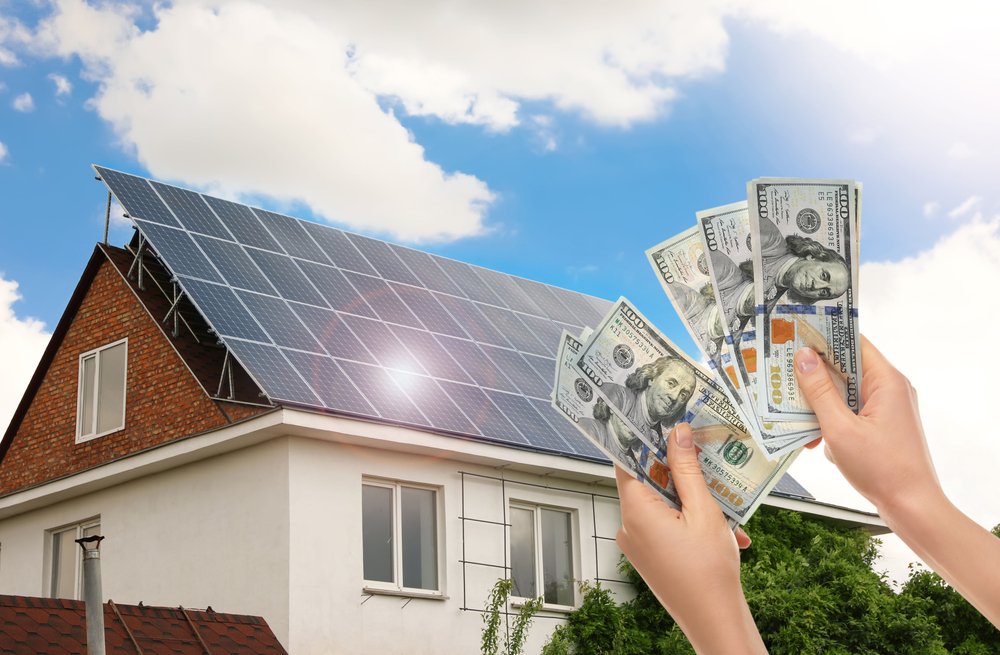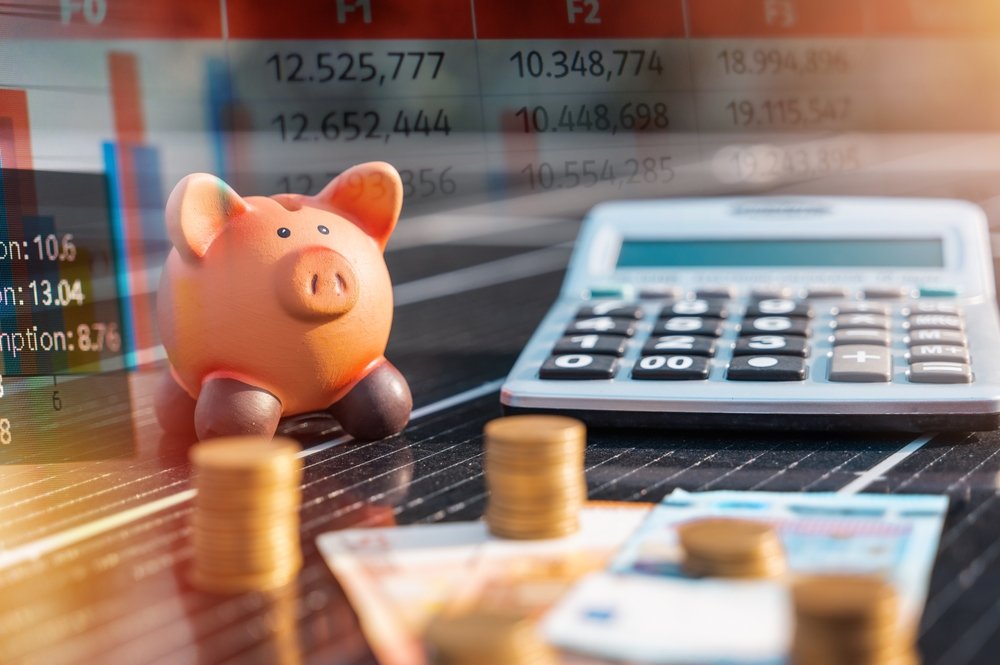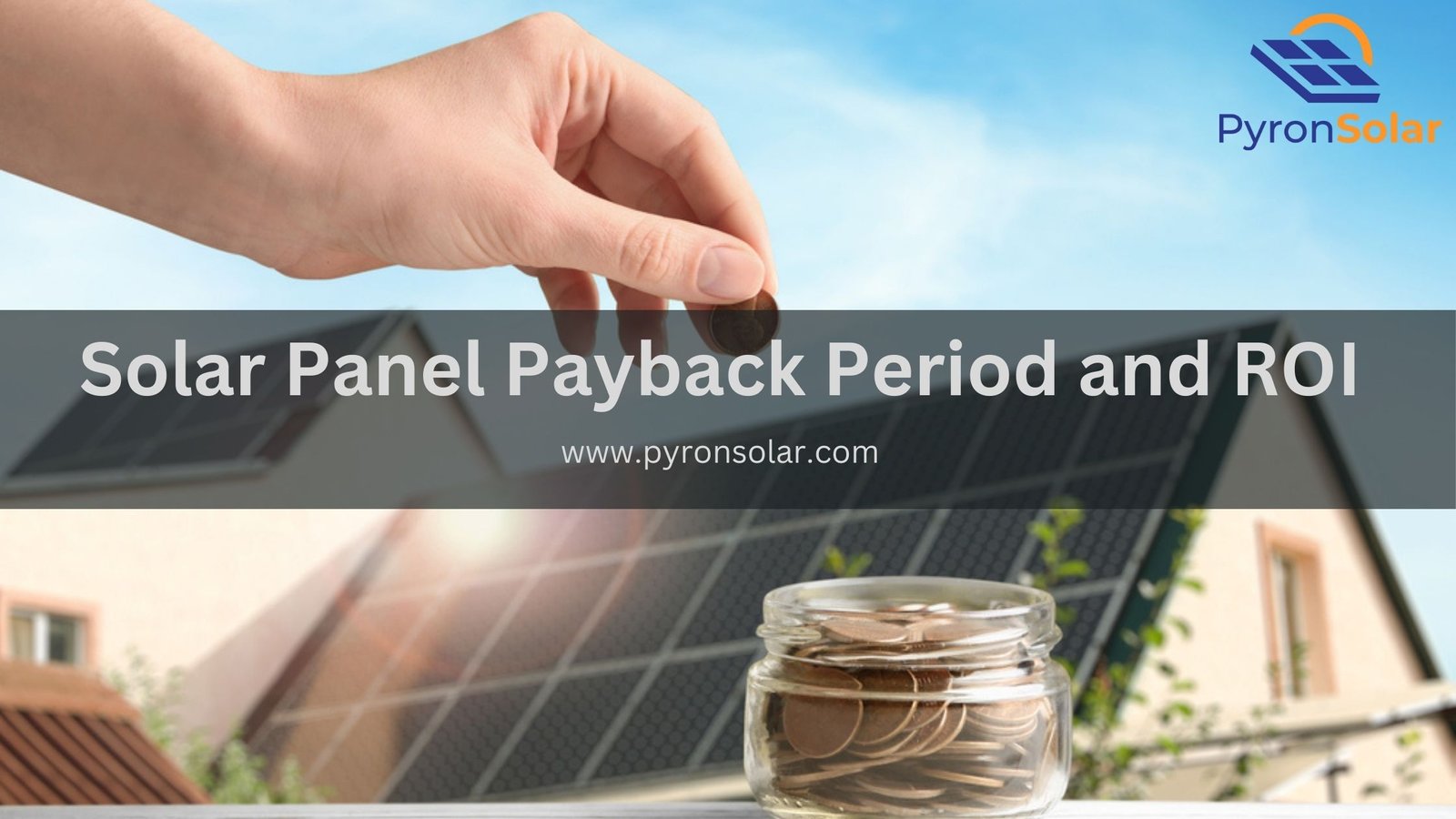One of the major benefits of owning solar panels is that they are increasingly becoming inexpensive with low-carbon emission technology, thereby offering homeowners a smart financial and environmental choice. Mainly, it helps to lower your electricity bills, plan for efficient energy consumption, prevent increasing energy costs, enhance your property value and marks a great return on investment (ROI).
One of the main advantages is that the solar panels can pay for themselves over a certain period known as the payback period. It is important to know about the solar panel payback period so that you estimate the recovery of your initial investment by calculating your solar system’s savings and total cost.

In this article, you will understand the factors that result in a good payback period for solar panels by understanding how to calculate the combined costs as well as the annual savings. Mainly, you will know the lifespan of solar panels which helps you to plan for the best incentives and determine the output of your solar panel system.
What is the Payback Period for Solar Panels?
The solar panel payback period is a key metric to measure the total amount of time taken to save as much cost on your electricity bills that are paid for your solar panel system. It helps homeowners determine the time taken to recover the initial cost associated with investment.
The payback period is inversely proportional to the return on investment. This is because the shorter paybacks indicate more profitable expenditures, whereas the longer payback periods are less preferable.
Several factors influence the solar payback periods such as system capacity and output, geographical zones, funding options, incentives and rebates, energy demand, maintenance, and performance.
Solar Panel Payback Period vs Solar ROI
Most often people confuse themselves with the meaning of Solar Payback Period and Solar Return on Investment (ROI).
The Solar Panel Payback Period is the amount of time taken for a photovoltaic panel system to earn back the upfront cost through energy savings or several financial scheme benefits. Let us consider a simple example to understand the concept of solar payback period in a better way:
If you invest $20,000 on a solar panel system and obtain a federal tax credit of $5,000, the cost after incentives is $15,000. If your solar panels reduce the electricity bill by $1,600 per year, then your payback period would be 9.3 years approximately (assuming without the increase in electricity rates). However, you will learn the calculation process later in detail.
On the other side, Solar Return on Investment (ROI) is a metric used to calculate your overall solar system’s profitability over some time in terms of percentage. In other words, it is the difference between the initial investment cost and the total savings which is finally divided with the result of the initial investment cost. A higher ROI highlights a more beneficial financial investment. By observing the below example, you can easily get the idea of solar ROI:
Let us assume you have invested $20,000 for a 12-kilowatt solar power system in your home with an average ROI of 10% in the US. You can expect annual savings of $2,000 per year (10% of $20,000) and monthly savings of $167 (dividing $2,000 by 12 months) approximately.
What is A Good Payback For Solar Panels?
The average payback of solar panels is typically between 9–12 years depending upon several factors such as utility fees, incentives, system capacity, and several others.
According to the Department of Energy (DOE), superior quality residential solar panels last upto 25 years or more, thereby allowing homeowners to benefit from energy usage reductions of 15–29 years after recouping from the initial solar investment. For instance, if your panels operate upto 25 years and your payback period is 10 years, you will still have a minimum savings of 15 years. Also, few solar panels can survive more than 35 years.
The solar industry’s rule of thumb states that the payback period should be lower than half of the overall system’s lifespan. In other words, your system is paid off better for the more years of electricity saved. For example, if a solar panel system has a lifespan of 20 years, the payback period should be less than 10 years.
How to Calculate Solar Panel Payback Period?

Here is a step-by-step guide on how you should calculate the solar payback period:
- Estimate the Combined Costs
- Determine your annual energy savings
- Calculate the solar payback period
Combined Cost of Solar System
The total cost of a solar system can be categorized into these main types namely:
Hard Costs: These expenses comprise the hardware components of the system, such as the solar panel modules, inverters, and installation equipment that make upto 35% of the total costs. However, the material prices fluctuate according to the manufacturers, specifications, and features.
Soft Costs: The expenditures for installation, obtaining permits and approvals, overhead costs for running a solar company and administrative charges make up to 65% of the total cost of a solar system, according to the stats provided by the Solar Energy Industries Administration (SEIA).
There is also a lot more about the hard cost and soft cost of solar systems that you should probably know.
This is the first step to determine the combined costs where you need to subtract any of these available incentives from the total cost:
- Federal tax credits
- State tax credits
- Solar panel rebates and Net metering
- Solar Renewable Energy Credits (SRECs)
- Performance-based incentives (PBIs)
For example, if you have paid $25,000 for the overall PV system that includes the taxes and additional fees from your solar provider. If you’ve recovered $5,000 due to the solar tax credits and rebates, your total investment would be $20,000 as shown below:
Total Investment= (Total payment) – (Incentives and Rebates)
($25,000) – ($5,000) = $20,000
Annual Energy Savings From Solar Panel
To determine the yearly energy savings from solar panel installation you need to consider several factors like the annual electricity requirements, solar system size and cost.
You can simply calculate your annual energy savings by adding up your monthly payments for upto one year. Let’s assume that your electricity bill costs $150 per month. It means that you will pay $1,800 ( $150 x 12 months) for power usage per year. This is how your annual bill savings are achieved by saving you from paying additional fees to your utility company per year.
Net metering plays a crucial role in these savings by preventing the requirement of battery storage and additional investments. It generates a passive source of income by offering credits to solar panel owners and promoting renewable energy sources by offering cost-effective options compared to non-grid systems.
Calculating the Payback Period for Solar Panels
Using the below formula, you can calculate the payback period of your solar panels:
Payback period in terms of years = (Total solar system cost) -(solar incentives and rebates) / (annual cost savings)
From the above data, let us calculate the overall payback period by assuming a simple example as explained below in detail:
- Total solar system cost: $25,000
- Solar Incentives: $5,000
- Annual Cost Savings: $1,800
You need to divide the combined costs (subtract solar incentives from the total system cost) by the annual cost savings:
($25,000) – ($5,000) / ($1,800) = ($20,000) / ($1,800)= 11.11 years is the overall payback period.
Factors that affect the Solar Payback Period
Several factors such as the total system cost and its incentives, energy consumption, output, and electricity cost affect the payback period of a solar system.
Total Solar System Cost
Typically, the average cost of a complete solar system in the USA ranges between $12,000 – $30,000. In other terms, the rate varies from $2.50 to $3.50 per watt.
The solar panel Return on Investment (ROI) is calculated by analyzing the upfront installation costs with the savings amount on electricity bills over time. It means the higher ROI results in a longer time to recover your investment through savings on your electricity bills.
Purchasing high-quality expensive type panels with superior efficiency and larger system size can increase the cost and the installation complexity that requires additional labour, equipment, and enhancement of electrical components. Additionally, other factors such as your geographical location, sun exposure, type of mounting (roof or ground mounted) and power usage affect the solar panel system cost.
Solar Incentives
The Federal and state incentives play a crucial role in shortening the payback cost of solar panel systems which includes reducing initial investment and increasing energy savings with more accessibility and affordability, thereby encouraging individuals to prefer solar.
For instance, without claiming the 30% solar tax credit, an average homeowner has to look into a payback period of 12–13 years. Whereas enrolling into the scheme of solar tax credit minimizes the payback period of 9–10 years and adds $8,000 to conserve energy.
Energy Consumption
The amount of electricity consumption influences the sizing of a solar system as higher usage requires a larger panel structure. Moreover, larger systems produce more power with higher efficiency which potentially reduces the payback period.
You can collect the data of monthly kWh usage from your utility bills or estimate the yearly power demands of your household appliances and devices.
The Output of Your Solar Panel System
If your roof is filled with plenty of solar panel systems that can absorb high-intensity sunlight throughout the day, you can expect an output of 1 ton of electricity produced to see instant payback. Contrarily, your panels cannot produce more power in extremely shady zones resulting in a late payback. This means that the output of solar panels has an inverse relationship to the payback period.
Several factors such as efficiency, sunlight exposure, age of solar panels and proper temperature regulation affect the overall output of your solar panel system. You should know how to choose best solar panel to get maximum output.
Cost of Electricity
The higher utility rates and anticipated hike in rates make solar panel installation more lucrative for homeowners which helps them to self-generate electricity through reduced usage and without relying on the grid. This is because some utility companies impose demand charges during peak energy consumption periods for the pressure placed on the grid. Also, electricity rates tend to fluctuate over a certain time due to policy changes, market conditions and energy supply and demand. Although some utility companies offer plans with fixed rates to provide financial stability and security against the increase in future rates, it is advisable to ensure consistent savings through your solar panels.
{Video Source: Gary Does Solar}
Conclusion
Overall, the payback period of any solar panel system is an essential factor that every homeowner should consider to make responsible decisions before investing in solar energy.
Most importantly, you need to know that the above-mentioned formula may not help to determine the exact number of payback periods of solar panels in terms of years. This is due to several varying factors as time progresses such as shading, local weather conditions, electricity rate fluctuations, incentives and rebates, and energy demand.
However, understanding the concept of the payback period helps you to calculate the approximate time to earn back your initial investment and implement effective plans to maximize your energy savings.
How Long Will the Solar Panels Last?
The average lifespan of solar panels is between 25–30 years, whereas some high-quality Monocrystalline modules can last upto 40 years. Several factors like material quality, environmental conditions, installation practices, maintenance, manufacturer warranty, inspection, technological advancements, degradation rate, and the age of solar panels influence their lifespan.
Ray is an avid reader and writer with over 25 years of experience serving various domestic and multinational private and public energy companies in the USA.

